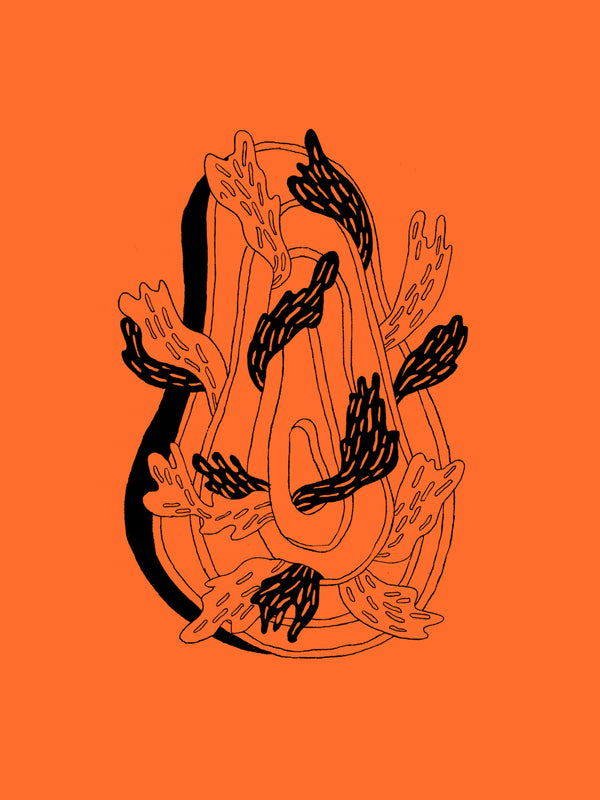We did have one thing going for us from the start: the belief that the key to our future would be found in our proverbial backyard. In my scant free time, I did a lot of research to speed up the process. A field guide published by the Swedish Army offered surprisingly pivotal inspiration. It was one of those little manuals designed to help troops navigate the wild, especially at precarious moments when they might be forced to wonder: Will I die if I put that leaf in my mouth?
The pocketbook explained that you could actually live off of our region’s landscape for an entire year. This struck me as the kind of information that wasn’t just useful to famished soldiers. I started to wonder more intensely than ever before: What’s really out there? What’s been growing at our feet this entire time that we’ve surely seen but not truly looked at?
What does it taste like, and what can we do with it?
To find out, we foraged through parks and gardens and along shorelines and streets, training ourselves to examine every nook and cranny with fresh, focused eyes. We realized everything that we’d been missing. I couldn’t believe that we found plants that looked like chives but tasted exactly like cilantro growing out of rotting seaweed on a beach. Wild sorrel captivated us: the flavor of the forest packed into a single herb. There were astonishing strawberries with the aroma of lavender and thyme, the texture of sorbet, and a sunripe sweetness I never thought possible.
There was sea buckthorn, wonderfully astringent. Scurvy grass, pungent as horseradish. More mushrooms in more varieties than we knew what to do with. Garlicky ramson. Ants you could describe to an unsuspecting eater as crunchy lemon snacks and they’d be none the wiser. Nasturtiums. March violets. Yellow stars of Bethlehem. On a daily basis, the landscape handed us new crayons to add to our set.

Sea buckthorn

Wild mushrooms
And as we experimented with those crayons, we were able to leave behind a somewhat unfulfilling initial style that could be described as French cuisine with a sprinkling of Nordic ingredients. I’ll give you an example of a breakthrough that sounds almost quaint today: on a trip to the marshland, we watched a herd of sheep grazing on a magnificent field of sorrel. Given that nature itself seemed to be telling us we should give the combination a try, we decided to make a simple dessert of sheeps milk and wild sorrel. The resulting dish wasn’t just absurdly delicious. It was different. It was new. We were expressing our region on the plate.
We were capturing moments in time and, given the scarcity of ingredients in the harsher months, even finding ways to extend them. Wild roses, for instance, only come into season for a few weeks annually, and that’s if the weather doesn’t get in the way. But they have an absolutely extraordinary floral brightness that is so versatile, so potent, so vivid. We pickled them by the hundreds of kilos in apple cider. It was another new crayon, which, like so many other pantry hallmarks, spun off into many more directions, yielding even more crayons—misos, kombuchas, spice mixes, and, as you may have noticed, vinegars.

Blackcurrant wood
Everyone on the team would begin every day of work with a bit of foraging. This served a purpose beyond providing the raw materials required to make our recipes. Tasting an ingredient right there, plucked straight from the soil from which it sprouts, gives you an indelible appreciation of its taste and worth, and allows you to build a connection to nature in an increasingly commodified world—a world in which even some cooks could be forgiven for thinking that vegetables grow in boxes. What’s more, learning how to spot what’s edible takes knowledge and effort. It puts you in the habit of being fully present. Foraging fosters intention.
We were far from alone on this journey. I’m thinking of a number of impossibly important figures in noma’s wider community, like the forager Roland Rittman. He pulled up to the restaurant one afternoon in his van. The man looked just like Santa Claus and, true to the resemblance, he came bearing gifts: he swung open up the doors of that truck, revealing a portal to a world of wild ingredients. It was a eureka moment. So was the first time one particularly eccentric mushroom forager rode in on his bike, pulled a plastic bag of ceps from a satchel, and smiled at the sight of tiny frogs still hanging out amongst the haul.
Two decades have gone by. The only constant in that span has been change. Radical change, time and time again. For one thing, our scope of influence and inspiration has widened as the years have passed and we have had the opportunity to see the world together. We have embraced new methods. Yet all these transformations have one powerful feature in common. All the breakthroughs ahead will, too, no matter where the future may lead Noma.
For us, it always starts by stepping into nature.





















































